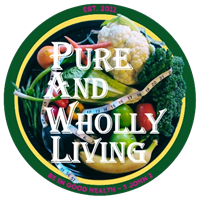Here’s a powerful exercise to try: wherever you are, wherever you go, simply look at the people around you. According to recent findings from the American Heart Association, one third of everyone you see has high blood pressure.
Hypertension is not just for grandfathers any longer. A whopping one in three Americans now have it. According to the Centers for Disease Control, hypertension is now common in everyone from toddlers to college students to grandpas (and grandmas.)
Scary, right?
More commonly known as high blood pressure, the disease occurs when blood pumps too forcefully through blood vessels. The great push of blood stretches veins and arteries out of shape. The vessels then tear and develop scar tissue as they try to heal. These scars act like burrs, on which cholesterol gets caught and builds up. Another scenario: vessels tear and rupture, sending fast-flowing blood everywhere.
The thing is, elevated blood pressure doesn’t cause symptoms (headaches, shortness of breath, dizzy spells) until it’s in its late stages, meaning most people don’t even know they have it. By then, they’re already at increased risk for heart attacks and strokes, the first and third leading causes of death in the United States.
So why the increase? A lot of it has to do with America’s rapidly rising obesity rates: over 33.8% of American adults and 17% of children ages 2 through 19 are clinically obese. Plus, people are increasingly sedentary, and they’re eating more high sodium manufactured food than ever before—two more strong factors for high blood disease.
Fortunately, hypertension can be both prevented and treated with lifestyle changes alone:
- Maintain a healthy weight: Being overweight can raise your blood pressure by causing your heart to work harder—thus creating stronger blood-flow—to support excess weight.
- Eat a plant-rich diet: Studies have shown that diets rich in vegetables and fruit help reduce the risk of hypertension as well as reduce current levels. Plant foods are also rich in potassium, a nutrient that is known to lower high blood pressure.
- Limit sodium to 1,500 mg or less: Salt causes vasoconstriction, the narrowing of blood vessels. This means blood has to push harder to get through the narrowed vessels. Two easy ways to cut the sodium in your diet is to limit the amount of salt you add to your food and avoiding sodium-rich processed foods.
- Be physically active: Regular physical activity—between 30 and 60 minutes of exercise most days—can lower blood pressure levels. And remember, exercise doesn’t have to be a marathon. Even smaller amounts of exercise—such as 10 minute-increments spread throughout the day—can help.
- Limit alcohol use: Three or more alcoholic drinks in one setting temporarily increases blood pressure, while repeated heavy drinking can lead to permanent increases in blood pressure.
- Don’t smoke: Smoking injures blood vessels, making them less supple and less able to handle increases in blood pressure.
Or, an easier way to look at preventing and helping to treat hypertension: live healthily. As Latin poet Marcus Valerius Martial said: “Life is not merely to be alive, but to be well.”
Source: Huffington Post
